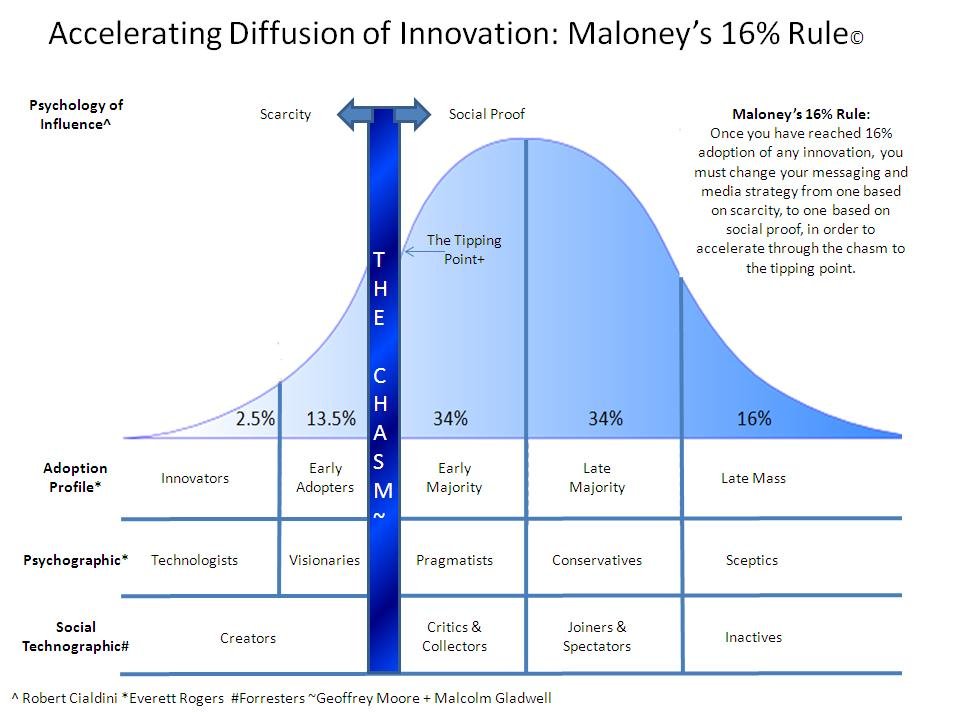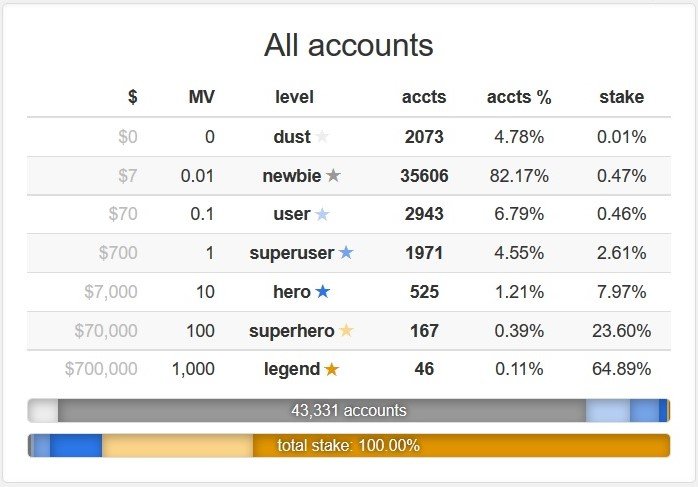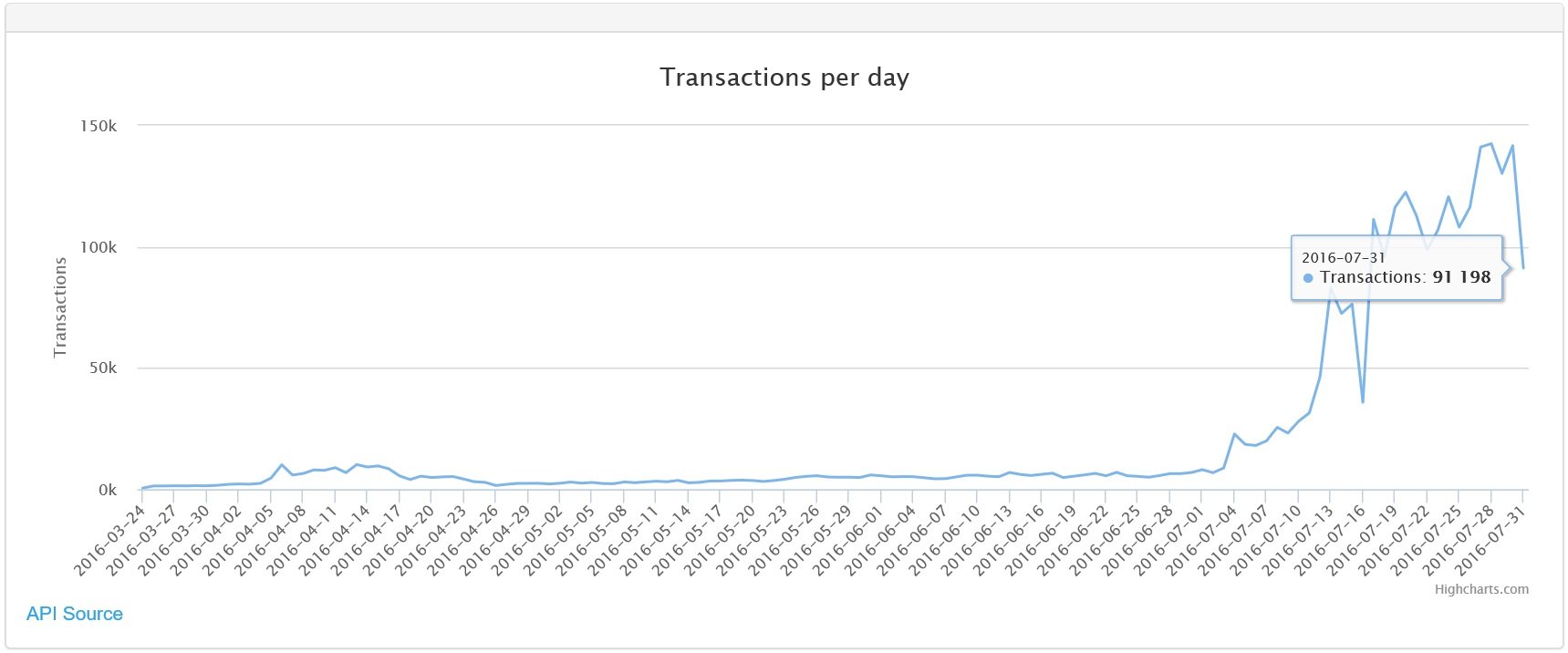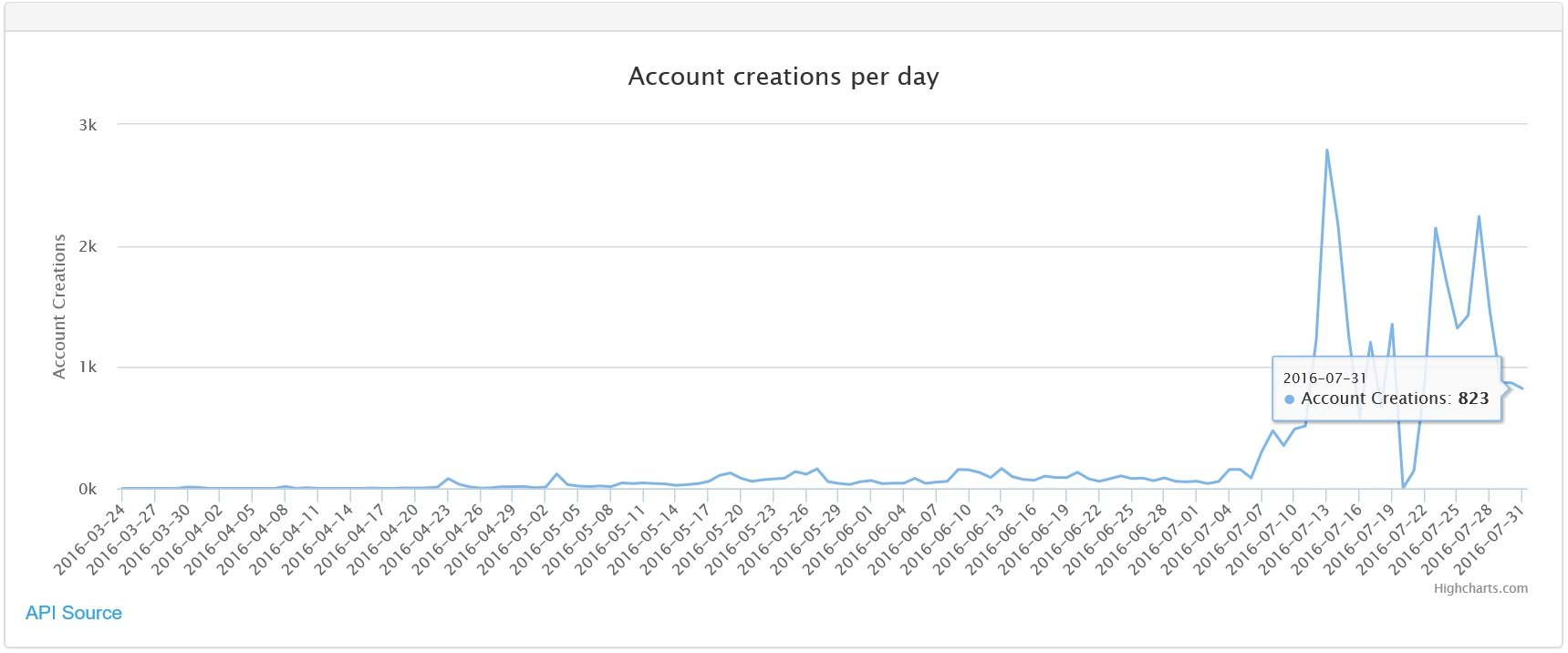Preface: I have worked several days on putting together this essay, correcting it, formatting it, and have initially posted an unfinished variation of it as a second part of my introduceyourself post. But because it wasn’t quite ready yet, after posting it, I have edited and updated it about 28 times and have put in another couple of hours until I couldn’t edit anymore.
As this seems a valuable thought experiment, and there’s an emerging movement suggesting we should move forward from introduceyourself posts and start focusing on more substantive contributions, I have felt that a complete and updated version of this essay would deserve a separate post. This is my acknowledgement and contribution to that movement, my #doyourpart if you will, as a model of how things could be done the right way (cc. @dantheman @anyx @neoxian).
I see Steemians are very thirsty for drama, but is anyone interested in intellectual gratification?
We’ll see. For now, I hope you'll enjoy the reading.

An Unstoppable Force And First Compelling Mass Market Solution
Preliminary Thoughts
Human Nature
The more we study human nature, we seem to discover that man is not as rational as he thought. In fact, he is invariably guided by a combination of conscious, subconscious, emotions and biases, which often lead to decisions that are, at best irrational, and at worst, very damaging for individuals and society.
In an ideal world, we would only have to build a great piece of technology and people would rush to adopt it immediately, simply because it would be in their best interest. Reality however, proves to be a lot more complex than that. Indeed, it has become exceedingly hard for people to make sense of things and though they may understand what’s wrong and what they might do to improve things, they rarely have the strength of character to act in accordance to what they think.
This is why mankind has learned the necessity of auxiliary precautions.
Elon Musk And The Hypothesis
Consider the story of Elon Musk, who is arguably one of the most important entrepreneur – engineer - inventor alive, and, apparently also a billionaire genius[1]. As he understood where we stand today, and what devastating future threats we could face, he came up with some ideas and plans as to how these problems could be optimally solved and threats could ultimately be transformed into powerful innovation for the benefit of humanity.
One of the problems, he figured, was that the automotive industry was rapidly advancing in the wrong direction due to unsustainable production and consumption of energy[2]. He also figured that arguably, for the immediate future, part of the solution would lay in electric cars[3] [4]. But the biggest problem with electric cars was their perception. Who wants them anyway?! They’re slow, ugly, unreliable, low range, boring and unsexy. So even if you would make an electric car, you could not beat people into buying it, and indeed, nobody would.
Electric car perception before Tesla.

Or at least, nobody until they learned about Tesla Motors[5]. In fact, Musk figured that the most effective way to solve the problem would be to radically redefine the perception about electric cars, by creating the first compelling electric car ever built which would truly capture the imagination of people. It was clear, the car would have to be better in almost every aspect than its gasoline competitors[6], but, more importantly, the car would have to be sexy, irresistibly so.
And here lays the brilliance: the burden of psychological hard work would shift from the customer to the inventor. An irresistibly attractive product would be created, and all the customer would have to do, is follow his basic instincts, passively catalyzing the solution for a very important problem in the process.
Electric car perception after Tesla.

Model S - Photo credit.

Model X - Photo credit
An Antifragile Meta-solution
It seems most solutions for big and important problems are very fragile, precisely because they are dependent on a highly unstable variable, namely, human nature. But think for a second, what if we could create a meta-solution, one that could solve or isolate a much bigger problem, rendering us resilient or even better yet, antifragile[7] to human nature?
Indeed, how would such a meta-solution even look? Well, instead of asking of people to use their willpower and self-discipline, requiring a great deal of intellectual and psychological effort to fight a cause, we should try to put in a great deal of thought at the beginning, in designing an irresistible, almost addictive product. Presumably, once launched, it would drive itself to adoption with an seemingly unstoppable force. In fact, precisely when people would lack any kind of willpower and self-discipline, acting instinctively and impulsively, epidemic growth would commence.
The Tipping Point
Lets assume we could create such a product. Henceforth, our only target would be to reach a tipping point: the point when sufficient mass and speed would coalesce into an exponential growth period. That is the same point at which epidemics become pandemics, when growth explodes in such a way that it virtually becomes unstoppable.

Steemit: Aligning Incentives For The Masses
To the best of my knowledge, Steemit is perhaps the most apt iteration of a meta-solution to date[8]. Indeed, this rather unique iteration seems to consist of two critical parts: first, there exists a powerful and fundamental built-in economic incentive which aligns private greed with public interest; secondly, on this primary economic incentive, a relatively simple yet exceedingly flexible and deceptively potent social layer is built. In fact, it is this combination that differentiates Steemit from its predecessors and competitors[9], swiftly transforming a snowball into an apparent avalanche, overruling both social inertia and reluctance to change.
The Litmus Test: An Overall Perspective On Growth Rate And Quality
Coming back to practice, there seem to be two critical indicators worth mentioning at this point. The first one is the growth rate. Presently, Steemit has ~43,331 registered accounts and has grown with ~10000 new accounts during the last week(an impressive ~31,25 %)[10] [11]. That's ~1428 or 4,46% new accounts per day. Indeed, as others[12] have pointed out, Steemit has already surpassed Ethereum by daily transactions and is seriously chasing Bitcoin next. The exact numbers may vary from day to day, but there seems to be a healthy growth period ahead. In fact, if this rate continues, and I suspect it will, by the end of August we should see ~90,000 registered accounts. All this only 3 months after the official launch.



The second most critical indicator after you have growth, is quality. As you have probably seen, there is an ongoing discussion about identity theft, plagiarism and other forms of degenerated content and this is indeed a healthy indicator of the community immune system at work. The important thing to understand here, is that overall Steemit is moving in the right direction, albeit facing some rather natural problems which come with fast growth rates.
Secondly, this whole situation seems to be effectively caused by an obvious form of perverse incentives. Right now the steemit community pays orders of magnitude more for drama, however faked and shallow it might be, than it pays for other valuable and thought-provoking posts. Indeed, to put it simple, the incentive is vastly greater to create a fake identity with a rudimentary fictional story, throw some photos in and add a drama touch, than to spend long hours creating an original and insightful essay, correcting it, formatting it and sharing it with the community.
This is clearly wrong, and we must address it as soon as possible[13]. However, this is far from an unsolvable problem. In fact, with the right incentives in place, some clear voting best practices and much needed individual contributions, we could gradually kill the disease and allow Steemit to flourish again.
A Riveting Experiment
Though Steemit may still be an early stage experiment which could eventually fail in any number of ways, evidence thus far suggests it could be a rather wild and rare animal. Indeed, for all we know this could turn out to be a Swan. A Black Swan[14] [15]. Since I am very fond of Black Swans, and they are rare, unleash extreme impact, and seem to be only retrospectively predictable[16], the most appropriate course of action would be to maximize my exposure to areas where potentially positive Black Swans could emerge.
So, I will be here. Experimenting, nurturing and curiously examining it, patiently waiting to see what it turns out to be.
References
[1] - Elon Musk is “the founder, CEO and CTO of SpaceX; co-founder, CEO and product architect of Tesla Motors; co-founder and chairman of SolarCity, co-chairman of OpenAI; co-founder of Zip2; and co-founder of PayPal. As of June 2016, he has an estimated net worth of US$12.7 billion, making him the 83rd wealthiest person in the world.
Musk has stated that the goals of SolarCity, Tesla Motors, and SpaceX revolve around his vision to change the world and humanity. His goals include reducing global warming through sustainable energy production and consumption, and reducing the "risk of human extinction" by "making life multiplanetary" by setting up a human colony on Mars.” - http://en.wikipedia.org/wiki/Elon_Musk
[2] - I am referring to pollution and climate damage with potentially devastating consequences for the long term along a high burn rate and possible eventual depletion of relatively scarce resources.
[3] - Here is the Master Plan, Musk posted in August 2006: https://www.tesla.com/blog/secret-tesla-motors-master-plan-just-between-you-and-me
[4] - After 10 years, an updated version has been published. So here is the Master Plan, Part Deux: https://www.tesla.com/blog/secret-tesla-motors-master-plan-just-between-you-and-me
[5] - Here is a car built from the ground up to take advantage of the technology available in the 21st century: http://www.teslamotors.com/models/features#/environment
[6] - Tesla Model S was rated 99 out of 100 points on Consumer Report, the highest rating ever awarded to a car: http://money.cnn.com/2013/05/09/autos/tesla-model-s-consumer-reports/
[7] - "Some things benefit from shocks; they thrive and grow when exposed to volatility, randomness, disorder, and stressors and love adventure, risk, and uncertainty. Yet, in spite of the ubiquity of the phenomenon, there is no word for the exact opposite of fragile. Let us call it antifragile. Antifragility is beyond resilience or robustness. The resilient resists shocks and stays the same; the antifragile gets better" - https://en.wikipedia.org/wiki/Antifragile
[8] - Please note that a very early variation of this essay has been posted some time ago by me on bitcointalk. What’s interesting though, is that back then it was just a thought experiment, outlining a goal towards which I thought we should strive. Right now, I can finally see the first iteration. Quite impressive.
[9] - Although Bitcoin(and perhaps all the other crypto-currencies for that matter) has exemplified an interesting variation of the economic incentive, it has always lacked the second and equally critical part: a simple yet flexible and potent user interface. Indeed, the technical barrier of bitcoin seems to be still its main obstacle for average user adoption and the root cause for all kinds of security problems.
[10] - Data taken from https://steemle.com/charts.php
[11] - Data verified with https://steemd.com/distribution
[12] - The argument can be found here: @clayop/steem-passed-ethereum-s-number-of-transaction-and-will-pass-bitcoin-soon
[13] - This is an important subjects which cannot be seriously addressed without deviating the whole course of the essay. It certainly deserves a separate post attempting to clearly define the problem and proposing various pertinent solutions. I will try offer some thoughts as soon as I see relevant practical solution.
[14] - "What we call here a Black Swan (and capitalize it) is an event with the following three attributes.
First, it is an outlier, as it lies outside the realm of regular expectations, because nothing in the past can convincingly point to its possibility. Second, it carries an extreme 'impact'. Third, in spite of its outlier status, human nature makes us concoct explanations for its occurrence after the fact, making it explainable and predictable.
I stop and summarize the triplet: rarity, extreme 'impact', and retrospective (though not prospective) predictability. A small number of Black Swans explains almost everything in our world, from the success of ideas and religions, to the dynamics of historical events, to elements of our own personal lives.“ - https://en.wikipedia.org/wiki/Black_swan_theory
[15] - Black Swan farming is a very instructive essay by Paul Graham, emphasizing how hard and counterintuitive startup investing really is. By extrapolation, one could make a good argument that crypto investing is similarly hard and counterintuitive, if not more so. Here is a link to the essay: http://paulgraham.com/swan.html
[16] - “Hindsight bias, also known as the knew-it-all-along effect or creeping determinism, is the inclination, after an event has occurred, to see the event as having been predictable, despite there having been little or no objective basis for predicting it.” - https://en.wikipedia.org/wiki/Hindsight_bias
